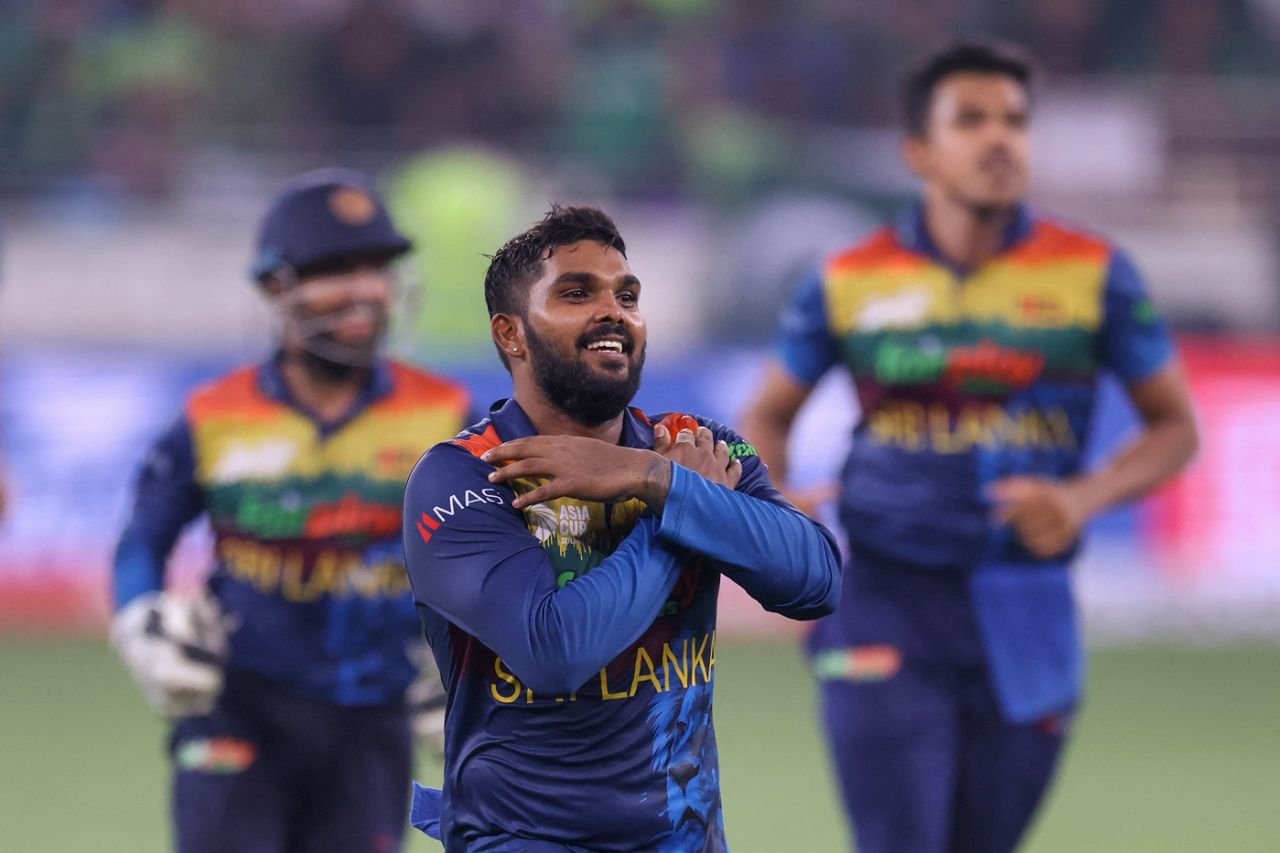
Wanindu Hasaranga Slams Cricketers for Inciting Social Media Hate
Wanindu Hasaranga Accuses Fellow Cricketers of Fueling Social Media Hate Against Team
Wanindu Hasaranga, the dynamic captain of the Sri Lankan cricket team, has recently made headlines with his forthright accusations against certain past and present cricketers. Upon returning to Sri Lanka after a disappointing World Cup campaign, Hasaranga did not hold back his frustration. As the team disembarked at the Bandaranaike International Airport, he addressed the media, shedding light on what he perceives as a significant issue plaguing the team beyond their on-field performance.
In his candid remarks, Hasaranga accused some cricketers of using social media to incite hatred against the national team. “We are aware of the individuals responsible for these posts,” he stated firmly, indicating that these are not mere anonymous trolls but people within the cricketing fraternity. “Some people create pages and share critical content solely to gain more attention on social media. Unfortunately, some cricketers are involved as well. There is little we can do about the nature of social media,” he lamented.
This statement has sparked a flurry of discussions among fans and analysts alike. Social media platforms have become a double-edged sword for public figures, providing a space for connection but also for criticism. For cricketers, especially those from cricket-mad nations like Sri Lanka, social media can amplify both praise and vitriol to extreme levels. Hasaranga’s revelation that former and current cricketers might be contributing to the latter is particularly alarming.
The allegations have opened up a broader conversation about the role and responsibility of athletes, both past and present, in shaping public perception of their teams. Criticism from fans is expected, but when it comes from within the cricketing community, it carries more weight and can be far more damaging. Former cricketers often transition into media roles or become influential voices on social media, and their opinions can sway public sentiment significantly.
Hasaranga’s frustration is understandable given the context. The Sri Lankan team had high hopes going into the World Cup, and their early exit was a bitter pill to swallow for both the players and their supporters. The captain acknowledged this disappointment, stating, “We understand the fans’ frustration and we share their disappointment. Our performance was not up to the mark, and we made mistakes that cost us dearly.”
However, Hasaranga emphasized that constructive criticism is different from malicious attacks. The captain’s point underscores a critical issue: the difference between critiquing a performance and undermining a team’s morale through constant negativity. Constructive criticism, when delivered with the intent to improve and support, can be beneficial. In contrast, persistent negative comments, especially those that question the players’ commitment or integrity, can demoralize and divide.
The nature of social media exacerbates this problem. Algorithms favor sensational content, which means that negative and controversial posts are more likely to go viral. This creates an environment where criticism can quickly spiral into abuse. For a young team trying to rebuild and find its footing, such an atmosphere can be particularly toxic.
Hasaranga’s comments also point to a need for greater solidarity within the cricketing community. Teams often speak about the importance of a strong dressing room culture, but this unity needs to extend beyond the current squad to include former players as well. A supportive ecosystem can help young players navigate the pressures of international cricket, whereas a divided community can lead to increased stress and a sense of isolation.
The Sri Lankan cricket board and the cricketing community as a whole may need to consider ways to address this issue. This could involve creating platforms for constructive dialogue between current and former players or offering media training to help players handle criticism more effectively. It might also mean developing guidelines for social media conduct that encourage positive engagement and discourage destructive behavior.
Hasaranga’s statements are a wake-up call. They remind us that the impact of words, especially from influential figures, can be profound. As fans and former players, there is a responsibility to support and nurture the next generation of cricketers. Criticism should aim to uplift and improve, not to tear down and demoralize.
In conclusion, Hasaranga’s accusations against certain cricketers for inciting hatred on social media highlight a significant challenge for the Sri Lankan cricket team. While addressing the team’s performance issues is crucial, it is equally important to foster a supportive and constructive environment both on and off the field. The cricketing community must come together to ensure that criticism serves as a tool for growth rather than a weapon of division.




Leave A Comment